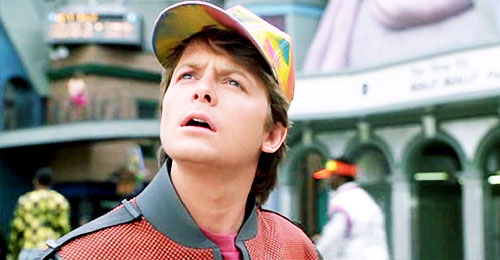November 3, 2015
by Brad Sanders
Last month was the anniversary of the date to which Marty McFly traveled in Back to the Future 2, and with the surge of new technologies and IoT devices that are literally changing how we live and work, we thought it would be a good exercise to think about what stock trading will look like in the not-so-distant future.
THE NEED FOR SPEED
Trading is now measured in nanoseconds. How fast is a nanosecond? Well, it is one billionth of a second. In one nanosecond, light only moves 15 inches! And yet the trading community, particularly the high-frequency trading sector, continues to squabble over new ways to shorten timing by a nanosecond or two. Do this, they believe, and you are ahead of the competition and profits are almost endless.
While trying to be the fastest on the block has been fruitful so far, there is a law of diminishing returns with speed. The cost surrounding driving speeds down to almost instant execution will soon outweigh the profits that could be obtained.
Also, Moore’s Law applies here, and at some point our computational power will reach its limit. Moore’s Law states that the number of transistors in an integrated circuit doubles every two years. If this is the case, at some not-too-distant point, wouldn’t computers be as “fast” as they can be, and then wouldn’t the tech community have to move to make computers more powerful in other ways?
COSTS
Trading costs are already extremely low. When I started trading securities (and I am only 36 years old – so this was not that long ago), I used to get paid $0.05 a share to trade stocks for the institutional community. Now, the cost per share is so low that it is not even measurable in one-share amounts, and everything is sent through a computer.
Commissions being this low have already removed specialists from the NYSE trading floor and diminished the need for most firms to hire actual “traders”. Instead, many have compliance people managing best practices for execution.
THE FUTURE
Given the need for innovation on Wall Street in order to keep up with crunching margins, and with the disappearance of antiquated revenue streams, I am of the opinion that the future of trading lies within the power of computing itself. Specifically, artificial intelligence.
Imagine your computer being your own active portfolio manager? Sounds crazy, but algorithms and learning programs are already powerful enough that certain operating systems can actually look at your portfolio and learn what type of investor you are. So it’s really not that far of a leap to think your computer could then scan the market, incorporate fundamental analysis, trading patterns, etc, and then construct a portfolio based around your risk profile and how you like to invest money.
There are programs that already do similar work for retailers and other consumer-driven industries by mining our online search queries and purchasing behaviors in order to better target new customers, and to tailor an experience that will make us buy. With Wall Street being one of the most used methods to grow wealth, it is only natural that computing power will migrate to this sector in more and more ways as we move forward.
This may seem scary, but it really isn’t. It is a matter of efficiency. The only thing more powerful than computing power is the human brain, and until science learns enough about the brain to help us harness its full capability, our devices are the next best thing. Humans, I suspect, will always need to be in the driver’s seat to make sure our computerized advances are behaving properly. But in a rapidly changing technological world as we become more and more reliant on something capable of thinking faster than us to stay ahead of the game, the tables could possibly turn.














